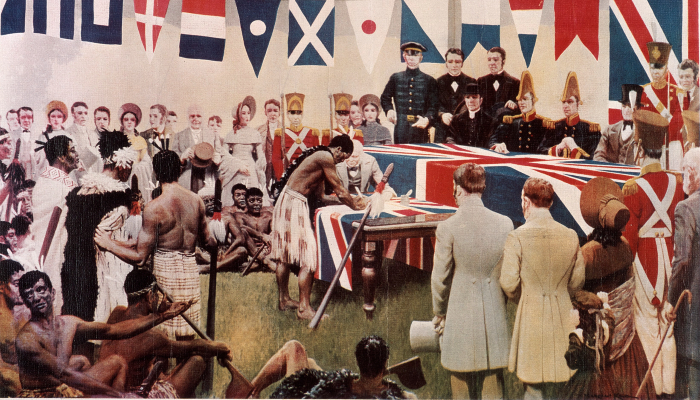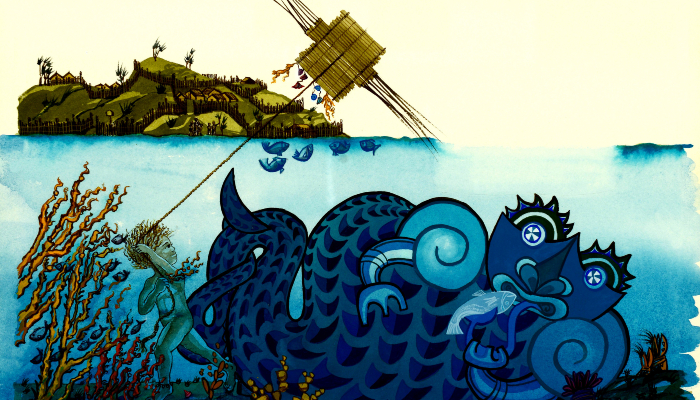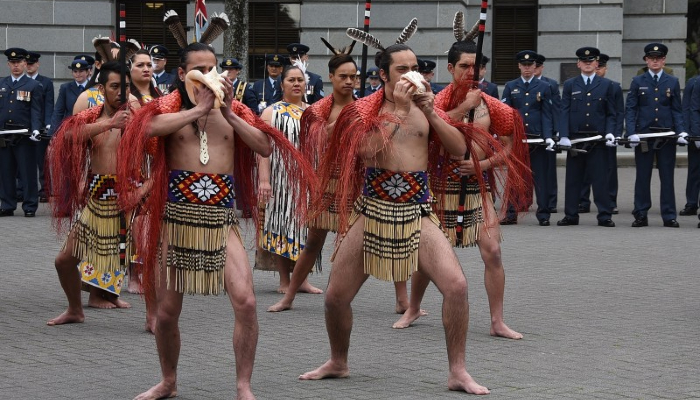Te reo Māori (Māori language)
Where can I find information about te reo Māori (the Māori language)?
(Years 7-10)

Image: Kapa Haka by Tony on Flickr.
Entry last updated: 6/10/25
Introduction
Te reo Māori is the native language of Aotearoa New Zealand. It is very important to Māori culture and identity, and forms a part of New Zealand's culture and heritage. This entry will show you where to find information about the history of te reo Māori, as well as resources to help you develop your te reo skills.
History of te reo
The history of te reo Māori has been one of ups and downs. In the early 1800s te reo Māori was the sole spoken language in New Zealand. As more English speakers arrived, English became the predominant language spoken in New Zealand. By the mid 1900s there were concerns that the language was dying out which resulted in major initiatives being launched to try and revive the language. More information about the history of te reo Māori can be found on the following websites.
Te Ara: The Encyclopedia of New Zealand
Te Ara is an excellent starting point for all questions about Aotearoa New Zealand.
Enter 'te reo' into the search bar at the top of the page. The search results will bring up a number of articles related to te reo Māori.
Select the article called Te reo Māori - the Māori language or look at the images and videos to do with te reo Māori in New Zealand.
Search for 'te reo petition' to find news footage of the Te reo Māori petition, 1972 asking for te reo to be taught in schools, being presented to parliament.
Tips: Search words, or keywords, are the most important words in our question. Usually it’s better to leave out small words like ‘the’, ‘a’ and ‘of’ and just choose the main ones, eg te reo. We can always change our keywords or add more if we need to.
This is the Māori Language Commission website. The Māori Language Commission was set up under the Māori Language Act 1987 to promote the use of Māori in New Zealand. This site has useful information and resources about te reo Māori, including a timeline showing the history of te reo Māori.
You can change the language of the website by selecting the Māori or English buttons at the top of the page.
Select Ngā mahi whakarauora History & revitalisation.
Select a date range to find out about the history of te reo Māori in those years.
Tips: We like sites like this because they’re reliable. You can tell because of their web address – they have either .govt or .ac, meaning they are from government or educational organisations. They’re also New Zealand sites, so relevant for us.
Reviving te reo
In 1971, researcher Dr Richard Benton made a presentation at a Māori Language Day event called 'He waka pakaru kino'. In this address he stated his belief that the Māori language was dying. This address helped to spur the resurgence of te reo Māori. Since then, a number initiatives have been implemented to encourage more people to speak te reo, such as Māori Language Week. In response to fears that te reo was dying out as an everyday language, Māori language education initiatives were also created, such as Te Kōhanga Reo, Kura Kaupapa Māori and Te Ataarangi.
This is another great website for information about Aotearoa New Zealand. If we go all the way down the page we can see that the website belongs to the Ministry for Culture & Heritage, so the information is well-researched and reliable.
Go to Politics and government.
Under Treaty of Waitangi, select Te Wiki o Te Reo Māori - Māori Language Week.
Tips: This site also contains useful information about other topics covered in this entry such as History of te reo Māori and learning te reo.
Te Ara: The Encyclopedia of New Zealand
Te Ara also has information about Kaupapa Māori education - schools where lessons are taught in te reo Māori.
Go to Topics and select Education and training.
Choose Māori education - mātauranga.
Now read Kaupapa Māori education and Other developments, 1970s onwards.
Learning the language
In 1987, the Māori Language Act was passed by the Parliament of New Zealand and te reo Māori was made an official language of New Zealand. There are a number of websites that have been created to help people learn te reo.
This site teaches the Māori alphabet, pronunciation of Māori words, Māori words and phrases and includes video movie lessons which allow you to learn the basics of te reo.
To help with pronunciation select the tab Māori basics and then How to Pronounce Māori.
Choose the tab Speak Māori for some podcasts for beginner to advanced learners.
They also have a YouTube page set up for waiata (song) and karakia (prayer) which you may find useful.
Tips: Websites that have .org or .net in the address can have good information, but you need to assess how reliable it is. Check the About us link on the website, if you can find one. That can tell you what the organisation’s mission and values are.
Whakaata Māori (Māori Television) is New Zealand's indigenous broadcaster. They provide a range of local and international programmes on television and online.
Go to the tab for Categories and choose Akoranga Reo.
These have different shows that will help you learn the language.
Te Whanake Māori Language Online
This site is the website for the Te Whanake set of textbooks. It includes animations, podcasts, streamed television programmes and online activities to help you develop your te reo Māori skills.
Choose one of the sections to begin.
To begin with videos find Te Whanake Videos and select Tune in.
Then choose Series 1 from the top of the page.
Tips: This a dual language website which means you can choose whether you want to view the content in English or in Māori.
Dictionaries
There are also some great Māori dictionaries available online to help you with your te reo skills.
This is a bilingual dictionary that includes language entries, idioms and explanations about grammar.
Enter a Māori or English word or phrase in the search box.
Learning Media Ngata Dictionary
This online dictionary illustrates the use of Māori and English words in sentences and phrases. It explains how words should be used as well as their meaning.
Enter a Māori or English word in one of the search boxes.
This Māori dictionary comes from He Kupenga Hao i te Reo, a Māori langauge education and research organisation. It includes explanations (whakamārama), sentence examples (tauira kōrero), and more.
Enter a Māori or English word in the search box.
Select the speaker icon to hear how something is pronounced.
Books
There are many books that have been written in te reo or to help you learn te reo, such as:
Meariki : te rapunga i te pono by Helen Pearse-Otene.
Ngā waituhi o Rēhua by Katarina Mataira.
Te kākano by John C Moorfield.
Kuwi & friends Māori picture dictionary by Katherine Q Merewether and Pānia Papa.
A Māori phrase a day : 365 phrases to kickstart your reo by Hēmi Kelly.
Remember to check out your local public or school library to see what they have!
SCIS no: 1834322
Topics covered
Related content

Māori culture and customs
Where can I find information about traditional Māori culture and customs?

Treaty of Waitangi
Where can I find information about the Treaty of Waitangi - Te Tiriti o Waitangi?

Pūrākau (Māori origin stories)
Where can I find information about Pūrākau (Māori origin stories)?

Ngā pūoro Māori (Māori music)
Where can I find information about ngā pūoro Māori (Māori music)?

Ngā toi Māori (Māori arts and crafts)
Where can I find information about traditional Māori arts and crafts?

Matariki
Where can I find information about Matariki?

Kapa haka
Where can I find information about kapa haka?

Sign Language (New Zealand)
Where can I find information about sign language?

Communication
Where can I find information about communication?

Writing
Where can I find information about how to write?
